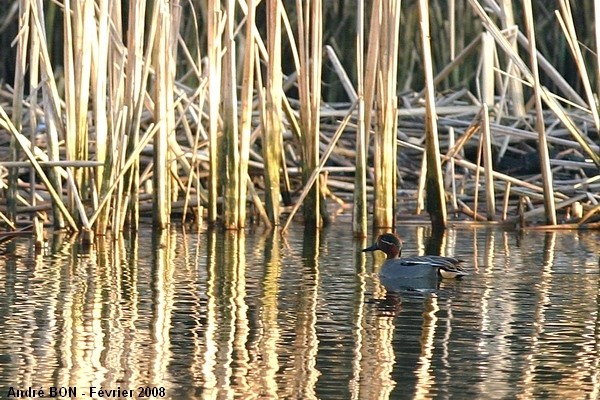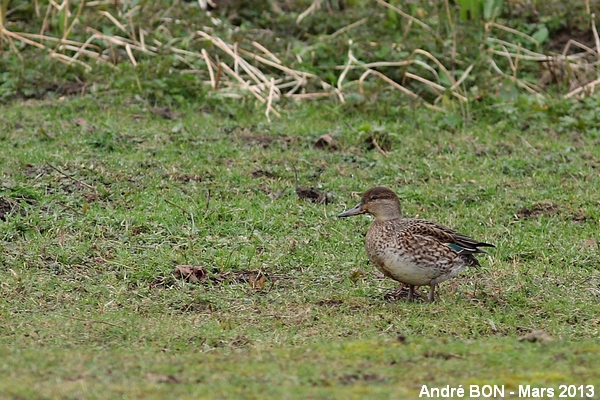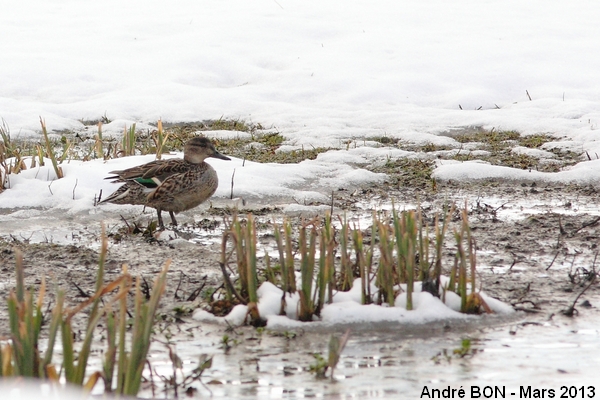


| Common Teal (Anas crecca (Linnaeus, 1758)) |



|
|
Scientific name: Anas crecca (Linnaeus, 1758) Common name: Common Teal Other names: Eurasian Teal French name: Sarcelle d'hiver, Sarcelle à ailes vertes, Sarcelline, Petite Sarcelle, Arcanette, Truffleur. Order: Anseriformes Family: Anatidae Size: Body size: 30 to 33 cm; Wingspan: 54 à 59 cm; Weight: 250 à 400g. Habitat: Still or slow running water with dense vegetation. Shallow and sandy coasts, lagoons and marshes. Food: Mainly small seeds but also some insect larva, some small molluscs and some small crustaceans. It collects food by filtering water with its bill. Nesting: The Common Teal's nest is located on the ground, hidden in the dense vegetation near water. Females lay 8 to 11 eggs between April and June. Migration: partially migratory. Populations move southwards during severe cold periods in winter. Geographic area: Europe and Asia, northern and temperate areas (Anas crecca crecca subspecies). North America (Anas crecca carolinensis subspecies). Western America and the Aleutian Islands (Anas crecca nimia subspecies). |
The Common Teal is the smallest European dabbling duck. It is often observed in large flocks. In nuptial plumage, males have a russet head crossed by a wide dark green patch, underlined by a whitish line. There is also a triangle-shaped black-bordered yellow patch on the rump. The wing's speculum is iridescent blackish-green. The chest is a creamy colour mottled with black. The rest of the body is greyish and marked with darker lines. Females are a much duller colour. Their have a beige brown plumage. They show a short white stripe on the lateral sides of the tail. Males in eclipse plumage are similar to females. |
| [To know more about the Common Teal] [Next picture] [Top] |

|
A small flock of Common Teals has come to spend some time in the reed bed bordering the pond. I have been able to shoot a couple of pictures in the far, but as soon as they saw me the Common teals hid inside the vegetation. Here is a small challenge for the next years. I will have to use a camouflage hut in order to take better pictures. |
| [To know more about the Common Teal] [Next picture] [Previous picture] [Top] |

|
I have read that Common Teals are always observed in flocks. This female appeared to me to be rather solitary ... I have observed it during a few days on the banks of a little pond. |
| [To know more about the Common Teal] [Previous picture] [Top] |

|
The short white stripe located on the lateral side of the tail is clearly visible on this picture. This stay on the banks of this little pond, accompanied by Common Coots, Common Moorhens, a small flock of Common Snipes and one Green Sandpiper, has very nicely started but this was followed by a short period of northern cold. |